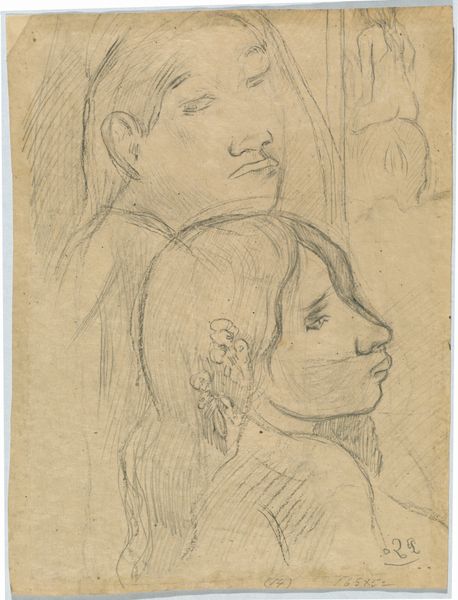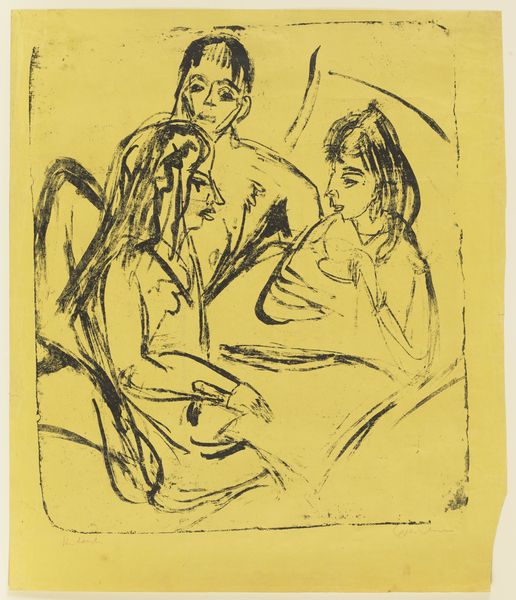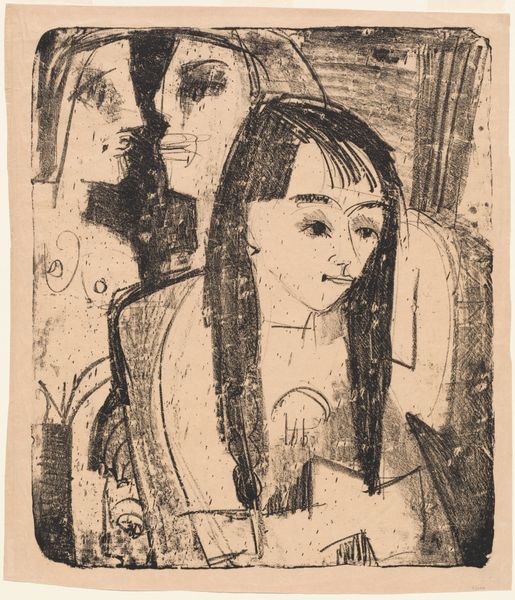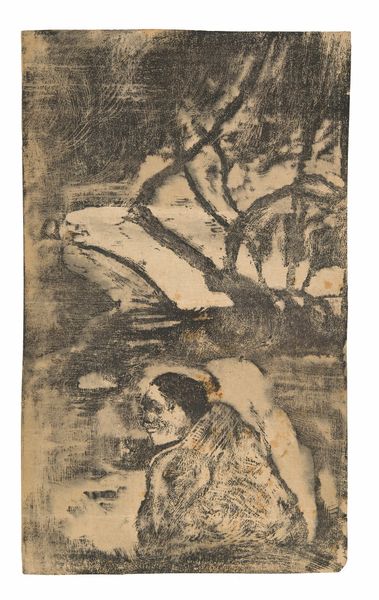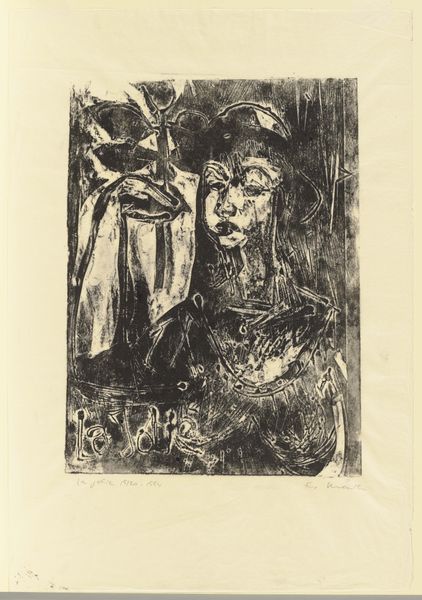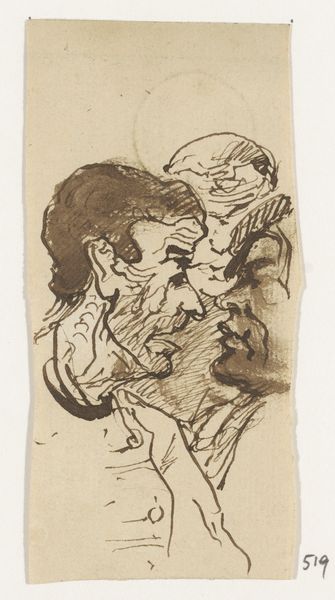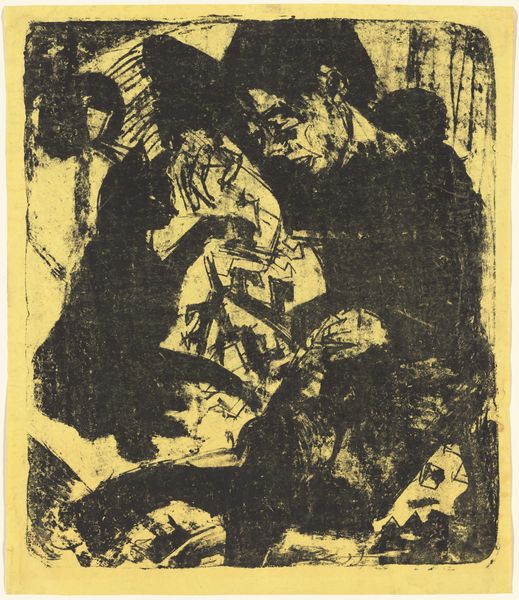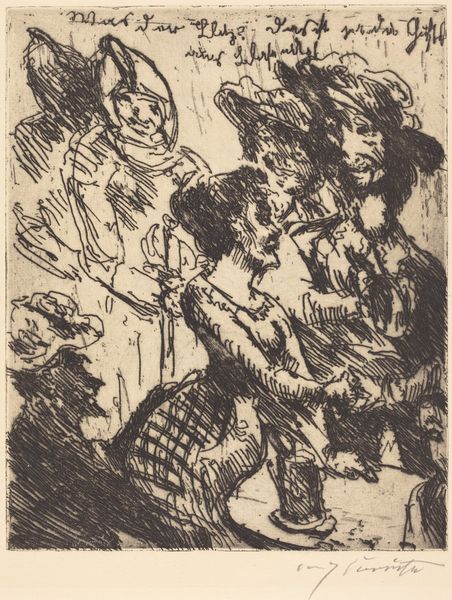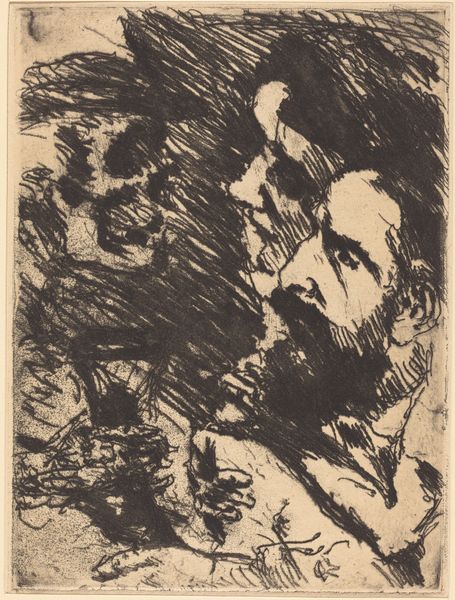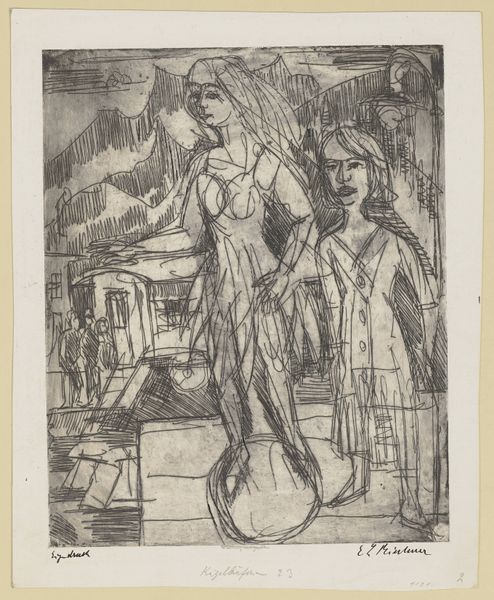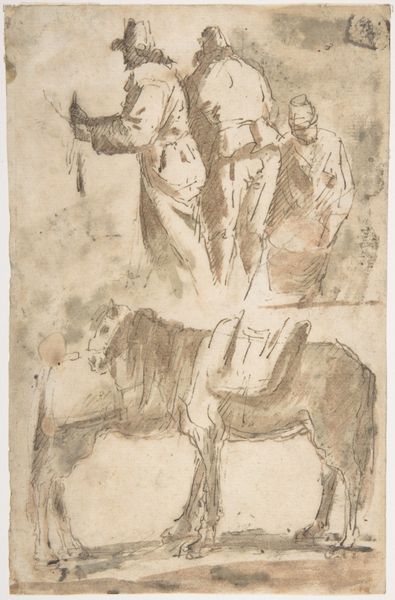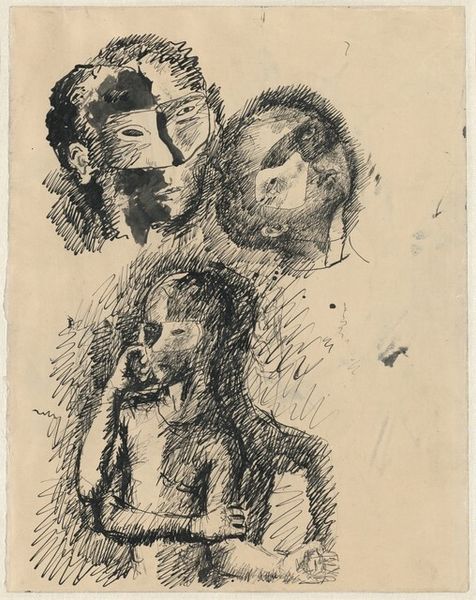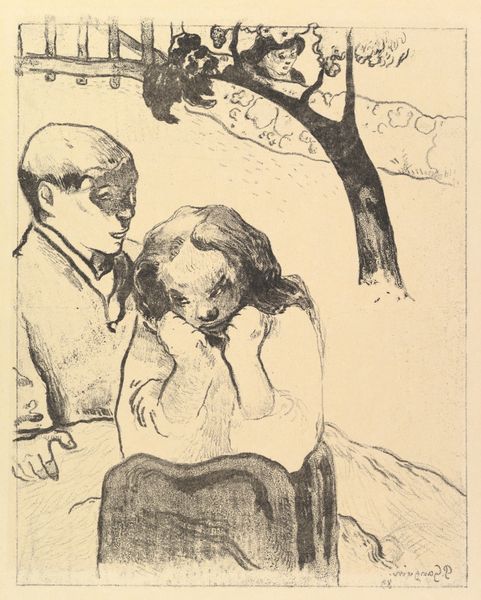![Two Marquesans [recto] by Paul Gauguin](/_next/image?url=https%3A%2F%2Fd2w8kbdekdi1gv.cloudfront.net%2FeyJidWNrZXQiOiAiYXJ0ZXJhLWltYWdlcy1idWNrZXQiLCAia2V5IjogImFydHdvcmtzLzE3ZjA1Yjc3LWQ4MzEtNGJhNS05MThhLTk3MmRkN2IxNzc2NS8xN2YwNWI3Ny1kODMxLTRiYTUtOTE4YS05NzJkZDdiMTc3NjVfZnVsbC5qcGciLCAiZWRpdHMiOiB7InJlc2l6ZSI6IHsid2lkdGgiOiAxOTIwLCAiaGVpZ2h0IjogMTkyMCwgImZpdCI6ICJpbnNpZGUifX19&w=3840&q=75)
drawing, ink, pencil
#
portrait
#
drawing
#
ink drawing
#
ink painting
#
pencil sketch
#
figuration
#
ink
#
pencil
#
post-impressionism
Dimensions: sheet: 45.8 x 34.5 cm (18 1/16 x 13 9/16 in.)
Copyright: National Gallery of Art: CC0 1.0
Editor: This is "Two Marquesans" by Paul Gauguin, created around 1902 using ink and pencil. There’s a melancholic feel to the drawing, especially in the downcast gaze of the figures. How do you interpret this work? Curator: This drawing speaks volumes about Gauguin's complex relationship with Polynesian culture. While aesthetically captivating, we need to critically examine his position as a colonizer appropriating Indigenous identity. How does seeing these figures through the lens of colonial power dynamics affect your understanding of the artwork's "melancholy"? Editor: It definitely complicates it. Knowing he's a European artist representing Marquesan people, the "melancholy" could be read as romanticizing a culture impacted by colonialism, right? Curator: Precisely. Gauguin’s gaze wasn't neutral; it was shaped by his own cultural biases and the power structures of the time. What narratives are silenced by focusing solely on Gauguin's artistic genius, and how can we bring Marquesan voices into the conversation about this work? Editor: So, instead of just appreciating the aesthetic, we should also consider what's missing or misrepresented about the Marquesan experience. How do we even begin to do that? Curator: By researching the history of French colonialism in the Marquesas Islands, looking at the impact of disease, forced labor, and cultural suppression on the Indigenous population. We can ask: what did Marquesan artists create at this time? What were their perspectives on these encounters? Editor: It’s like the artwork becomes a starting point for a much larger discussion. I hadn't really considered the power dynamics at play before. Curator: Exactly. By engaging with this drawing critically, acknowledging its problematic aspects, and seeking out marginalized voices, we can transform it from a symbol of colonial appropriation into a catalyst for meaningful dialogue about cultural representation and historical injustice.
Comments
No comments
Be the first to comment and join the conversation on the ultimate creative platform.
